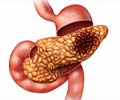
‘Overnight light exposure could have long-term effects on the metabolic function by increasing insulin resistance. Insulin resistance is the diminished ability of cells to respond to insulin action transporting glucose out of the bloodstream and precedes the development of type 2 diabetes.’
Tweet it Now
"Our preliminary findings show that a single night of light exposure during sleep acutely impacts measures of insulin resistance," said lead author Ivy Cheung Mason, PhD, who was a postdoctoral fellow at Northwestern University Feinberg School of Medicine when this study was conducted. "Light exposure overnight during sleep has been shown to disrupt sleep, but these data indicate that it may also have the potential to influence metabolism." In addition to Mason, the study authors include: Phyllis C. Zee, MD, PhD, professor and principal investigator; Daniela Grimaldi, MD, PhD, assistant professor; Kathryn J. Reid, PhD, professor; and Roneil Malkani, MD, assistant professor. All work at Feinberg School of Medicine, in the Department of Neurology.
Twenty healthy adults ages 18 to 40 were randomized into Dark-Dark (DD) or Dark-Light (DL) groups and run in parallel for a three day and two night stay. Participants had eight hours of sleep opportunity each night starting at habitual bedtime determined from one week of actigraphy with sleep diary. The DL group (n=10, 2 males, ages 26.61 ± 4.64 years) slept in the dark < 3 lux on Night 1 and slept in overhead room light of 100 lux on Night 2, while the DD group (n=10, 4 males, ages 26.78 ± 5.15 years) slept in the dark <3 lux on both Nights 1 and 2.
Overnight polysomnography and hourly blood sampling for melatonin were collected on both nights. Oral glucose tolerance tests were performed on both mornings following sleep in the dark or 100 lux of light. Changes from Day/Night 1 to Day/Night 2 were examined between DD and DL groups. Homeostatic model assessment of insulin resistance change values were significantly higher (p<0.05) in the morning following sleep in the light (DL group) compared to sleep in the dark (DD group). This effect was primarily due to increased insulin levels for DL compared to DD group.
Results show that a single night of light exposure during sleep acutely impacts measures of insulin resistance. Insulin resistance is the diminished ability of cells to respond to insulin action transporting glucose out of the bloodstream and precedes the development of type 2 diabetes.
Advertisement
Source-Eurekalert










